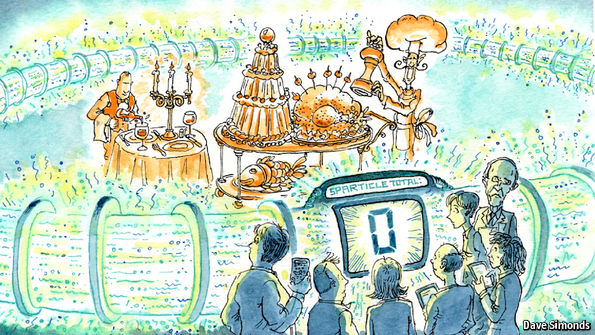A bet about a cherished theory of physics may soon pay out

IN 1994, on a warm summer’s evening in Erice, in Sicily, in the midst of a pleasantly well-lubricated dinner, two physicists made a wager on the laws of nature. The bet between Kenneth Lane and David Gross concerned supersymmetry, or “Susy” for short, a theory which stipulates that all known fundamental particles have heavier, supersymmetric counterparts called sparticles.
When the bet was laid, no sparticles had been spotted. Yet plans for a powerful particle accelerator called the Large Hadron Collider (LHC) were being drawn up. Dr Lane proposed that if the new machine found evidence for the theory, he would buy the table dinner at Girardet’s, an expensive restaurant in Switzerland considered by some the best in the world. If not, then dinner would be on Dr Gross. The terms, scribbled on a napkin, stipulated that the bet would be payable once the LHC had produced enough data to be sure of the outcome. The chosen figure, in the obscure units used by physicists, was 50 inverse femtobarns, or roughly 5 quadrillion of the high-energy collisions between particles that the LHC is designed to produce.
Two decades on, Girardet’s is no…Continue reading
Source: Economist




